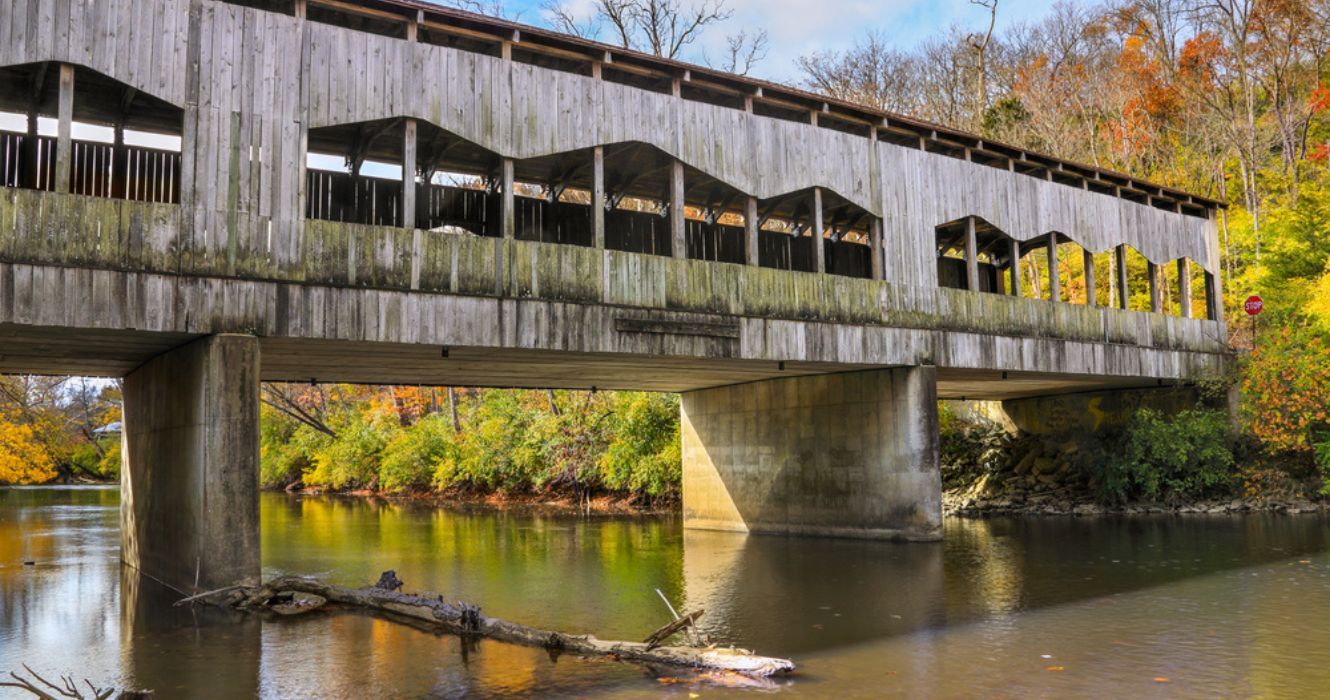Quick Links
If the prevalence of ghost towns in Ohio is any indication, the Buckeye State is ripe with spookiness, and one village in the state is said to be incredibly haunted. Approximately 2,834 people call the village of Waynesville, located in Wayne Township in Warren County, home.
However, this seemingly ordinary small town has a reputation for having more than 30 haunted locations. Author Chris Woodyard, writer of the famous "Haunted Ohio" series, called it "the most haunted village in Ohio." Here's why!
A Brief Overview of Waynesville's History
Waynesville, at the crossroads of US Route 42 and State Route 73, is geographically significant and widely recognized as the "Antiques Capital of the Midwest."
Founded in 1796 and given Wayne as its namesake in honor of General "Mad" Anthony Wayne, this village in southwestern Ohio is older than the state of Ohio.
As a result, it has a fascinating blend of historical and cultural influences.
Samuel Heighway hoped when he established Waynesville in 1797 that it would one day serve as the capital of the Northwest Territory, a dream that never materialized.
However, Waynesville has become one of Southern Ohio's most exciting and unusual tourist destinations.
On March 8, 1797, Heighway, an engineer from Shropshire, England, and a few other well-to-do English pioneers established themselves at Waynesville.
Together with the Methodist clergyman Rev. John Smith, the medical doctor Dr. Evan Beans, and the young scientist Sir Francis Baily, he bought thirty thousand acres in the Symmes Purchase between the Little and Great Miami Rivers. Their objective was to establish a plantation.
Waynesville's Mysteries And Ghosts
Visitors to Waynesville, Ohio, who are more likely to connect the town with the annual Ohio Sauerkraut Festival, may be taken aback to learn that the area is also home to several hauntings.
The Hammel House, for example, is a well-known haunted inn where some of Waynesville's first reports of paranormal activity originated.
Numerous reports of ghost sightings have plagued the house since it transformed from apartments into a bed and breakfast in the 1980s.
The existence of a mysterious black shadow, spotted several times, has been at the center of numerous paranormal reports at The Hammel House.
One evening, a man who wanted a calm night checked into Room 3 after being told he would be the only guest that evening.
When he got to his room, he promptly went to sleep, and after what felt like an eternity, he finally opened his eyes to the world's loudest party. He quickly sprung from bed, unlocked the door, and stepped into the corridor—complete and utter silence.
After exploring the first floor, he discovered that the basement was empty. In the morning, the man noticed a dark shadow moving through Room 2's wall and into Room 3.
A different urban legend in Waynesville also features a storied business and involves the Stetson family. In 1861 and 1865, Louisa Stetson Larrick's brother John Stetson visited his sister at their house in Waynesville. Mr. Stetson's future was gloomy due to both his tuberculosis and asthma.
As a result of his poor performance, his family let him go from the Stetson hat factory. In Waynesville, John made a one-of-a-kind hat for a passing traveler.
The original American Cowboy hat was born from that single hat, sparking a multimillion-dollar industry. Within a short time, John's health began to improve.
Louisa, his sister, however, contracted tuberculosis from him and died of it in 1879. While she had provided him with emotional and financial support during his tuberculosis battle, John only repaid her original $60 investment.
Over the years, a woman, widely assumed to be Louisa, has allegedly been seen by witnesses in the Stetson House foyer or attempting to enter surrounding stores while wearing a Victorian-era high-collared dress and gloves.
Another tragic event took place directly across the street from the Stetson House. In late August of 1879, newspapers across the country announced that Mrs. Mollie Hattie, her sister Clementine Weeks, and her 12-year-old niece Myrtle Weeks were brutally killed.
Mrs. Hattie's son and ex-husband were suspects. Unfortunately, the son's apparent suicide led to the case going cold.
Reports of "weird and unnerving sounds" led to the demolition of the house where the killings took place. New homeowners who moved into a house built on the same land often claim to have seen a Victorian woman walking with a child.
Other Attractions In Waynesville
For visitors who dare to indulge in the area's haunted history, consider these other attractions afterward:
- Waynesville's best museum to visit: The Caesars Creek Pioneer Village at 3999 Pioneer Village Road allows visitors to learn more about the history of the settlers of the southwestern Ohio frontier as they stroll through 19 authentic Quaker buildings dating back to the 1700s and 1800s.
- Festival to attend in the village: Ohio Sauerkraut Festival. This yearly (October) festival is one of America's largest arts and crafts show, with more than 400 curated artisan merchants, music, and entertainment.
- Where to shop: The Old Main Street Antiques Show. Twice a year, in the spring and fall, dozens of vendors set up shop to sell everything from antiques to handmade gifts, from furniture to fine art.

